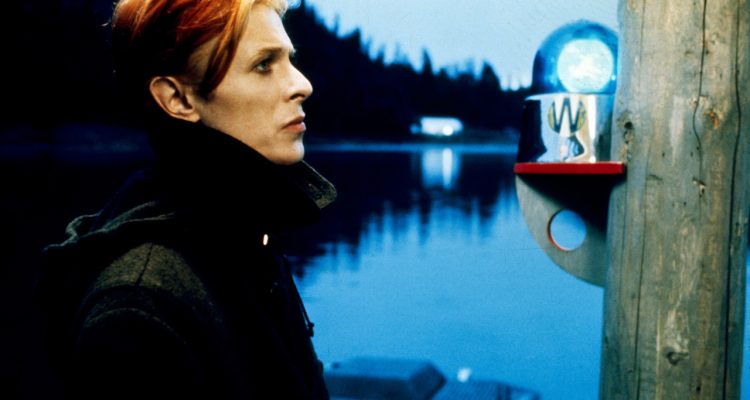 “Walkabout” (1971)
“Walkabout” (1971)
Working with an elliptical storytelling approach that would become part and parcel of his stylistic approach, Roeg fractures this survival tale so deeply that you almost forget it’s a borderline horror film. When two young siblings are cast into the wilderness by a suicidal father, they must face the cruel nature of the unforgiving outback — so goes the logline. But what emerges under Roeg’s direction is a film so impressionistic and subjective that it can and has been taken for a parable on any number of themes, from a critique of rural vs. urban living, to a meditation on the cruelty of nature, to a commentary on the impossibility of cross-cultural communication. What’s certain is that part of its beauty is the deceptive simplicity of its central story: from a fairly threadbare narrative start point Roeg weaves a surprisingly dense fabric of allusion, symbolism and inference as the two children come of age in their different ways: the young boy learning something of survival and death, the young girl unlocking her nascent sexuality. Roeg famously improvised most of the film from a 14-page script loosely adapted from the James Vance Marshall novel, but this looseness is deceptive too: by the time the film reaches its dreamy conclusion, it has reached such a pitch of strange resonance that it’s difficult not to be completely absorbed. A spellbinding journey through “the land of lost content,” “Walkabout” is an immensely fulfilling experience. [A]
 “Don’t Look Now” (1973)
“Don’t Look Now” (1973)
The most unforgettable film from Roeg’s unequivocal golden period, 1973’s “Don’t Look Now” is a peerless psychosexual masterpiece, one that is still too often overlooked despite periodic reappraisals (like a recent Time Out London Critics’ survey that named it the Best British Film of All Time). Donald Sutherland and Julie Christie play a pair of mourning parents who, after the tragic drowning death of their child in a kaleidoscopically poetic prologue, travel to Venice. Sutherland is an art restorer overseeing a large-scale project, and Christie, under considerable strain and susceptibility, falls in line with a pair of psychic sisters while a series of grisly murders seize the waterlogged city. It’s hopelessly atmospheric stuff, based on a short story written by Daphne du Maurier, the English author who also inspired Hitchcock’s “Rebecca” and “The Birds.” But the real triumph of the film is the way that Roeg pieces the film together in his typically elliptical way – how images (a small figure in a red rain slicker, a funeral barge) reoccur and collide into one another and sequences seem to be caught in the whirlpool of memory, with past, present and future shuffled together. The film is also notable for offering up the single greatest sex scene in the history of cinema, which was not only aped by Steven Soderbergh in “Out of Sight,” but is still an area of contention, with some close to production claiming that the sex wasn’t, er, simulated. Only “Don’t Look Now,” with its intoxicating oddness, can inspire everything from Lars von Trier’s “Antichrist” to the recent 007 entry “Casino Royale.” The movie was billed as a “psychic thriller” but not even the most gifted prognosticator could have predicted the film’s staying power. [A+]
 “The Man Who Fell to Earth” (1976)
“The Man Who Fell to Earth” (1976)
Are we so sure about Ziggy Stardust not being based in reality? David Bowie does a pretty convincing job in Roeg’s surrealist sci-fi classic of playing a stranded alien trapped on Earth and forced to become a technology mogul in order to rebuild his spaceship and send resources back to his dying planet. Bowie’s “Thomas Jerome Newton” however, gets lost in the excesses of the era (as, coincidentally, had so many of the period’s finest directors, musicians and actors) his vices eventually swallowing his ambitions and clouding his focus. Gradually his native curiosity turns into an insatiable appetite for alcohol, television and fetishistically exploring his alien pansexuality (cue one of the most fucked-up sex scenes to ever hit the screen) as he slowly, in typically Roeg-ian hypnotic fashion, falls from grace. Featuring great support from Buck Henry, Rip Torn, Candy Clark and even Apollo 13 commander Jim Lovell in a cameo, Bowie’s turn, in his first lead performance, is so intense as to feel pretty definitive, though surprisingly he wasn’t the first person considered for the role. That honor goes to the late Michael Crichton (wtf?) who, according to Roeg, had the requisite height, because “imagine if aliens came down to Earth, they’d actually be quite tall.” Roeg’s adaptation of the Walter Tevis novel may be surprisingly insular considering the picture’s global implications, but its moody, nightmarish tone and hallucinatory sequences turn “The Man Who Fell to Earth” into a hypnotic, trance-inducing experience beyond your average genre “experiment.” [A]

